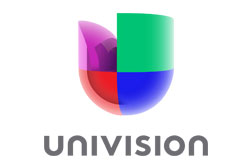 Organizers of a recent telethon sought a shared production storage and encoding system that would provide recording, archiving and sharing content to post production during the 30-hour event, as it was being transmitted live nationally. Due to the requirement for redundant recording of both “clean” and “dirty” feeds from the production switcher, more than 100 hours of content had to be stored. Additionally, the event’s producers also had to have near real-time access to the content as it was being recorded in order to quickly compile highlights of certain telethon events. Key to meeting these special requirements was a recording system and storage system that could archive files and simultaneously allow editing to take place.
Organizers of a recent telethon sought a shared production storage and encoding system that would provide recording, archiving and sharing content to post production during the 30-hour event, as it was being transmitted live nationally. Due to the requirement for redundant recording of both “clean” and “dirty” feeds from the production switcher, more than 100 hours of content had to be stored. Additionally, the event’s producers also had to have near real-time access to the content as it was being recorded in order to quickly compile highlights of certain telethon events. Key to meeting these special requirements was a recording system and storage system that could archive files and simultaneously allow editing to take place.
The Univision network, working in conjunction with the TeletónUSA Foundation, recently aired a telethon originating from the Ace Theatre in Los Angeles to benefit the Children’s Rehabilitation Institute of TeletónUSA (CRIT). CRIT was established to assist children suffering from neurological and musculoskeletal disorders stemming from cerebral palsy, muscular dystrophy, spinal cord injuries and limb amputations. The high-profile telethon was broadcast in high definition and featured a large number of well-known Latin American musical entertainers and guest celebrities, including Gloria Estefan, Ricky Martin and Sofía Vergara. The two-day, 30-hour-long event raised more than $15 million for the charity.
While production and airing of a 30-hour telethon has its own challenges, its producers needed a rock solid recording and storage ecosystem. Producers requested that the show be archived in its entirety; and they also wanted a system for pulling clips from saved content in near real time to allow replays of especially touching or meaningful moments. Four HD recording channels were required to accommodate primary and backup feeds from “clean” and “dirty” production switcher buses during the broadcast and all of the archived content needed to be immediately available to show organizers as soon as the production concluded.
Pronology was tasked with designing a workflow that could handle the archival recordings for transport back to Univision’s facility in Miami and sharing media in near real-time to post production on site. The final design comprised of two Pronology mRes™ multi-resolution encoders, a 32 terabyte Avid ISIS 5500 shared storage appliance, two Avid nonlinear editing systems and a pair of three terabyte USB 3.0 drives. The mRes encoders received “clean” and “dirty” outputs from the production switcher and were configured to write these feeds to the ISIS unit in separate directories. The mRes devices were also used to feed the USB drives. This configuration provided full backup in the event of a component failure and also ensured all of the telethon coverage content would be preserved should production personnel inadvertently delete or lose track of content. All files were MXF OP1a-based. The Pronology mRes devices are capable of providing multiple recording tiers — a high-resolution media file, an edit proxy and a web-streamable proxy — and can accommodate a wide variety of codecs and wrappers; only the full-HD capability was utilized in this application. Despite the simplicity of the setup, great care was taken to ensure that every element was fully backed up and no single points of failure existed, for as with all live events, there would be no opportunity for “do-overs.”
Organizers Impressed with ‘Walkaway’ Archival Access
Owing to the overall simplicity of the content recording and archiving process developed for the telethon, there was no need to wait for a considerable period for content to be offloaded from and placed on portable storage media. Once the final credit aired and the technical director faded to black, it was simply a matter of performing a spot check to ensure that everything had been captured properly and then pulling the USB 3.0 drives and handing them to the show’s producers. Considering there was about 100 hours of content involved (two records each of “clean” and “dirty” switcher feeds), the production staff was somewhat amazed when they didn’t have the usual lengthy wait while content was being transferred from a video server to the removable media.
Lessons Learned
Even though this project was on a fairly small scale with no off-site recording or editing operations, multiple resolutions, or codec formats or other technical challenges to contend with, the production staff was impressed with the overall smoothness and efficiency of the live recording and archiving system created for the show. The decision to use a minimum number of components that all had well-established performance records, such as the Avid ISIS system, helped give the staff speedy access to recorded content for desired replays. It also ensured a high level of performance required in connection with a live event of this magnitude. The client’s immediate access to archival copies of the entire show once it wrapped had an additional benefit: it helped minimize overtime costs typically associated with the production.
